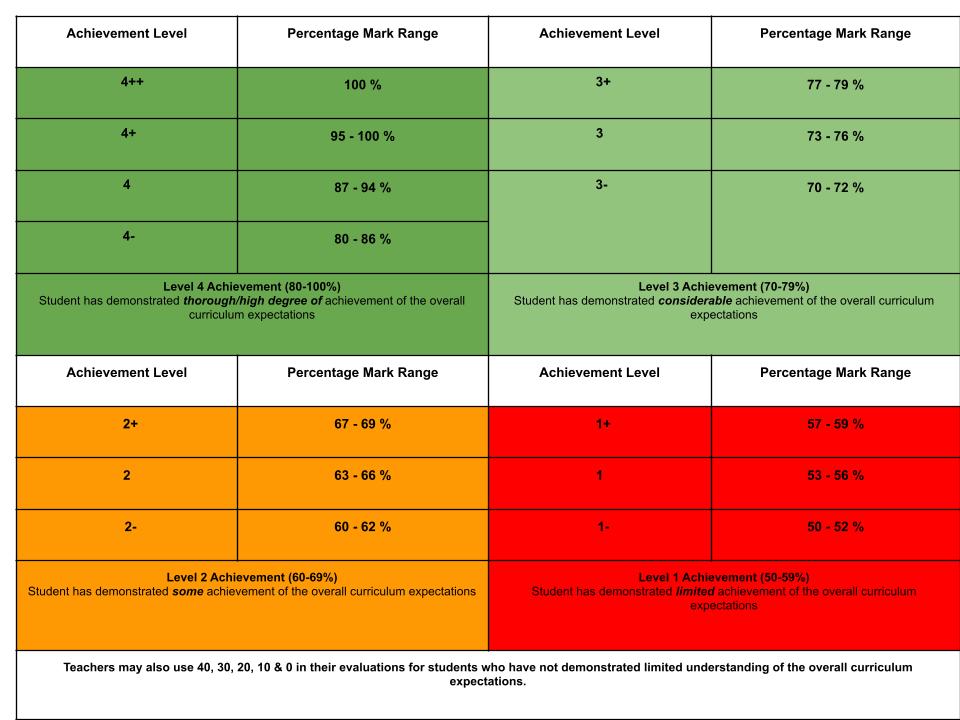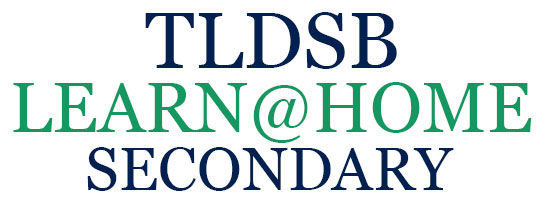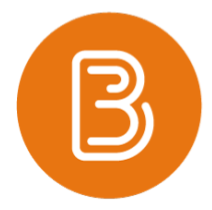Data Collection Model
The assessment for all courses is a data collection model as opposed to a traditional mark based paradigm. Students will demonstrate their mastery of the expectations on assessments and will be assigned a level rather than a mark. The benefits to this type of assessment model, compared to a mark based model, include reduced student anxiety, flexible timing, and increased student involvement and engagement. The following table shows how the levels compare to a traditional numeric grade. Midterm and Final marks will still be reported as a percentage, as per Ontario Report Card requirements.

Evaluation Procedure & Weighting
Evaluation is the process of determining a level of student achievement of the Overall Expectations for a course, which is recorded as a midterm or final grade on a report card.
Students will be given numerous and varied opportunities to demonstrate their achievement of the Overall Expectations from evidence collected over time from three different sources – observations, conversations and student products.
In determining a report card grade, teachers use their professional judgment to interpret the evidence of student achievement which reflects the student’s most consistent level of achievement with special considerations given to the more recent evidence.
The final grade is determined by the following breakdown:
Term Evaluation – 70 % Seventy per cent of the grade will be based on evaluation conducted throughout the course.
Final Evaluation – 30% Final demonstrations of learning (culminating activities and/or final examinations)
Learning Skills will be recorded separately on the report card. Students will be evaluated on the following: Responsibility, Organization, Independent Work, Collaboration, Initiative, Self Regulation
Learning Skills are evaluated as Excellent, Good, Satisfactory or Needs improvement.






